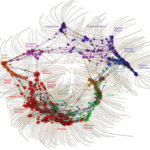 Much of management is about simplifying complexity—leadership requires embracing it. Spreadsheets, process flow diagrams, slideware, organizational charts: Each of these helps codify a commitment to a worldview that is linear, orderly, and predictable. Relationships are precisely delineated. Plans march step-by-step toward a predetermined end. Cause and effect are crystal clear.
Much of management is about simplifying complexity—leadership requires embracing it. Spreadsheets, process flow diagrams, slideware, organizational charts: Each of these helps codify a commitment to a worldview that is linear, orderly, and predictable. Relationships are precisely delineated. Plans march step-by-step toward a predetermined end. Cause and effect are crystal clear.
Unfortunately, the world in which we all operate is far more complex. While these snapshots of simplicity can be useful, they must not be seen as representing reality. Leaders must acknowledge that although simplicity has its place, the world is nonlinear, disorderly, and in many ways unpredictable. Leaders need to embrace and understand complexity.
In this piece for BecomeaLeader.org, Eric McNulty explores leadership insights that come from differentiating between simplicity, organized complexity, and disorganized complexity. Each has unique characteristics that shape how the system will behave and that give clues as to how leaders may influence it.







Leave A Comment